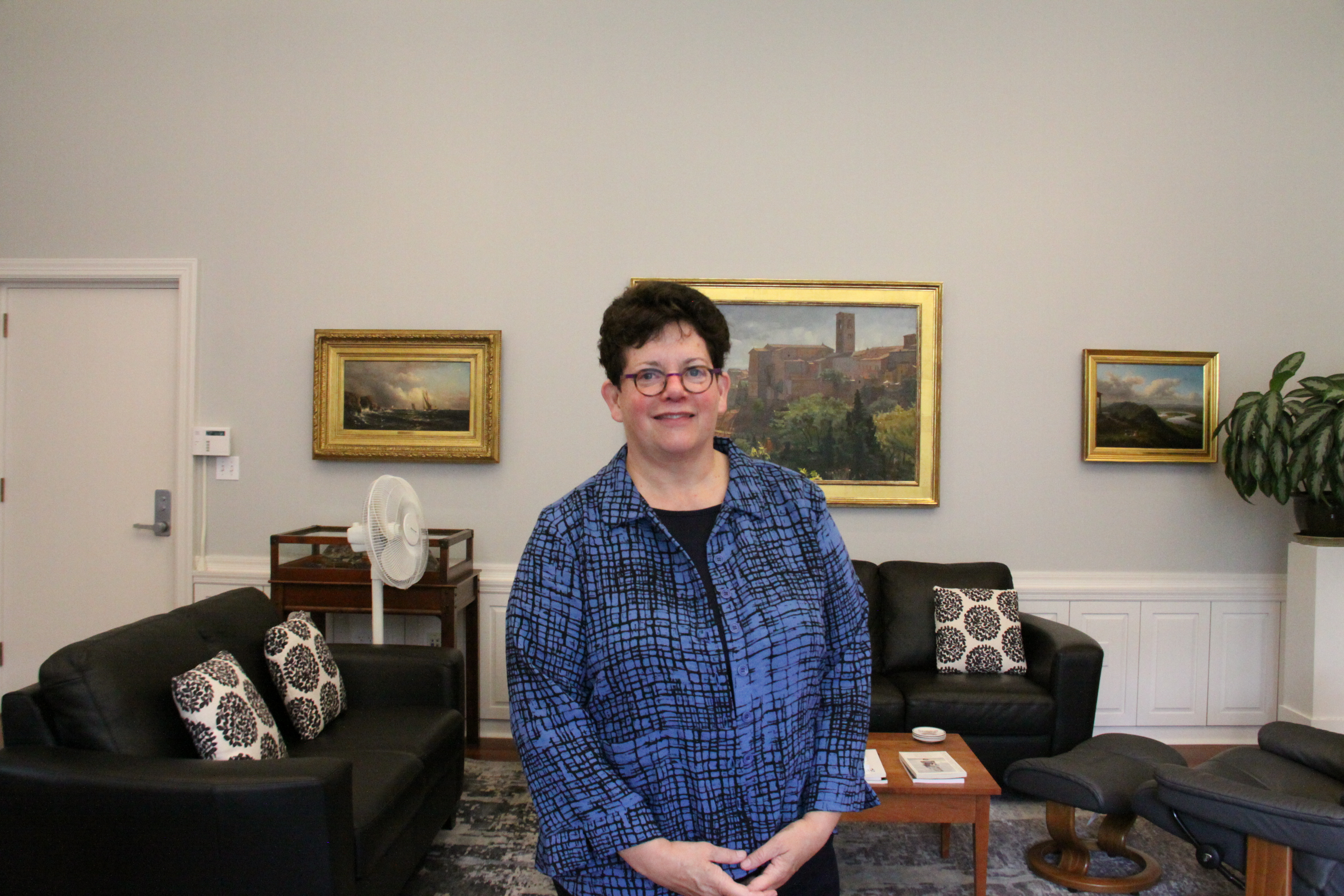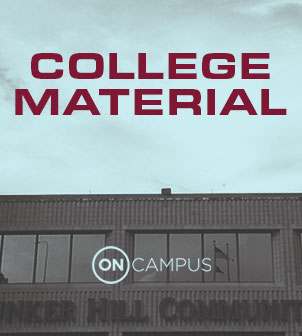
Amherst College President Biddy Martin sees her school's commitment to diversity as a moral obligation. (Kirk Carapezza/WGBH)
Last summer, the Supreme Court ruled that colleges can consider race as one factor in admissions. Now, as the Trump administration is reopening an investigation into a complaint that accuses Harvard of discriminating against Asian-American applicants, colleges are considering other ways to diversify their campuses.
Amherst College in Western Massachusetts has achieved a certain level of diversity by looking at both race and class.
At this year's convocation, Amherst College President Biddy Martin addressed incoming students and reiterated the college's values of academic excellence, educational opportunity and diversity.
"Collectively, we have failed to identify and cultivate all of the talent that exists,” Martin said. “It exists everywhere. It's simply a matter of identifying and cultivating it."
To cultivate talent, over the past 15 years, Amherst has made a commitment to recruit and enroll more low-income students and students of color from across the country.
The small liberal arts college subsidizes the cost of financial aid for these students with its relatively large $2 billion endowment. While other schools might want to recreate a similar environment, most say they don't have the endowment dollars to pull it off.
"We can afford it because we have a big endowment, but we're also putting a lot on the line," Martin said.
Washington Monthly Magazine ranks Amherst as one of the most affordable elite colleges in the country.
Related: A New Kind Of College Ranking
Today, about a quarter of the students at Amherst are low-income and 44 percent of this year's incoming class are students of color.
Martin sees Amherst’s commitment to economic and racial diversity as a moral obligation.
"What we're trying to do is do our small part to ensure that the American Dream is not lost," Martin said.
At other selective but less diverse schools, more than 75 percent of students come from high-income families, while only 3 percent come from low-income families.
Economists point out these schools have the money to admit poorer students. A new report from Georgetown's Center on Education and Workforce finds nearly 90,000 low-income students have the grades and test scores to get into selective colleges, but don't. Instead, they go to less selective colleges that tend to have lower graduation rates.
If it weren’t for Amherst’s push for diversity, students like Cristian Ramirez might have never made it to the campus.
Ramirez was the first in his family to go to college. Born in Peru, he went to high school in Florida. When it came time to apply, he said he was lost.
"My parents hadn't just not gone to college, they also didn't speak any English — they kind of still don't speak any English — but they always pushed me to do well in school,” Ramirez said. “But OK, when you get to college, what do you do? You're kind of on your own."
Amherst’s admissions officers encouraged Ramirez to attend the college's Diversity Open House. Amherst covered his airfare and he stayed on campus for a weekend.
"I got to sit in on some classes. I went to a couple parties,” Ramirez said. “Just talking to people, I got the feel from Amherst that this is an open community."
Ramirez was admitted and he says he's always felt comfortable on campus.
"Socially, there's not really any kind of stigmatization,” he said. “It's become an environment where you celebrate diversity."
But like any campus, Amherst has had its fair share of controversies.
This month, after a noose was found on the football field, students posted anti-KKK signs around campus that read, "This Is Our Campus, Not The Klan's."
Last year, the college's mascot, Lord Jeffery Amherst, got the boot following a slew of complaints from students.
Lord Jeffery was an English general who, in 1763, proposed giving smallpox-infected blankets to Native Americans.
Alumni had opposed abandoning Lord Jeffery, arguing that dropping his name was a form of censorship. Some threatened to stop giving to the college.
But not everything that’s happened at Amherst has had a negative impact.
Junior Megan Root, from the affluent town of Westport, Connecticut, said racial and economic diversity gives her a much richer education.
"There are a million things that you just cannot be aware of and cannot come close to understanding until you're talking to people who've had those experiences," Root said.
Two years ago, inspired by protests at other colleges, Amherst students of color gathered in Frost Library to publicly share examples of discrimination on their campus.
"I've had people forget who I am and I've been overexposed," one student told her classmates, crying. "I'm in a cultural limbo here at Amherst."
Root, who is white, was there. The experience helped open her eyes to the struggles of students of color.
"It was blindsiding for me because as a white person, I had never had to be aware of my race in a way that they were,” she said.
Amherst President Biddy Martin said this kind of dialogue across racial and economic lines is critical to students' education here.
"It might be, for some of our students, the most diverse environment in which they've ever lived, and, unfortunately, it might be one of the most diverse in which they ever live if things don't change," Martin said.
WGBH's Esteban Bustillos contributed to this story.
On Campus Radio will explore diversity on college campuses Sunday, September 24 at 8 p.m. on 89.7 fm. You can also stream the show on the WGBH app here.
Earlier: How One College Increased Diversity By Focusing On Class










